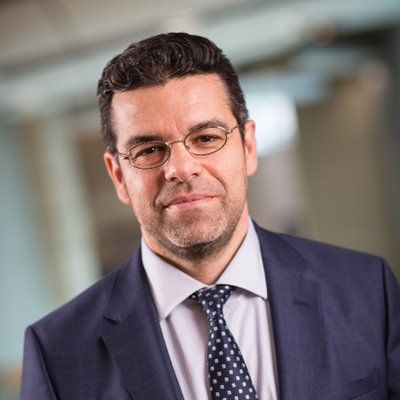Article
RESTAGE-HF: HeartMate II Combined w/ Optimized Therapy Could Facilitate Cardiac Remodeling
Author(s):
Results of a prospective, non-randomized trial indicate an approach using the HeartMate II LVAD combined with optimized medical therapy could increase the rate of device explantation and help facilitate cardiac remodeling.
Stavros Drakos, MD, PhD

A new study suggests an approach combining standard heart failure therapies with the Heartmate II Left Ventricular Assist Device (LVAD) could reverse structural heart damage in patients with heart failure.
Named RESTAGE-HF, results from the multicenter trial indicate implementing the approach could contribute to improved survival and explantation rates, which investigators point out could reduce the rate of heart transplantation and long-term device use.
"For decades, heart transplantation and LVADs have been the therapeutic cornerstones of advanced heart failure," said study investigator Stavros Drakos, MD, PhD, a cardiologist and director of Cardiovascular Research for the University of Utah Health Division of Cardiology, in a statement. "But this alternative approach is different. It appears to be a bridge to heart recovery without requiring transplantation or long-term use of an artificial heart pump."
In hopes of identifying a treatment that allows for greater rates of LVAD unloading and hemodynamic support in patients with advanced HF, the Abbott Medical-supported study sought to determine whether an approach combing optimized therapy with use of the Heartmate II LVAD could improve rates of LVAD and induce reverse remodeling of structural damage.Designed as a prospective, non-randomized trial, RESTAGE-HF enrolled a population of 40 patients and was conducted at the University of Utah, University of Louisville, University of Pennsylvania, the Albert Einstein College of Medicine/Montefiore Medical Center, the Cleveland Clinic, and the University of Nebraska Medical Center.
For inclusion in the study, patients needed to be between 18-59 years of age, have an LVAD indication as a bridge to transplant (BTT) or destination therapy (DT), have an ejection fraction less than 25%, and have a duration of HF of 5 years or less. All patients included in the study agreed to not undergo heart transplantation for a minimum of 4.5 months after LVAD.
For the primary end point, investigators chose to assess the proportion of patients who met explant criteria after treatment and testing protocol within 18 months with subsequent freedom from death, mechanical circulatory support, and heart transplantation at 1-year post-LVAD removal. For secondary end points, investigators chose to assess the proportion of patients meeting explant criteria and subsequently explanted, the durability of remission from HF at 1-3 years, the time course of reverse remodeling, changes in left ventricular ejection fraction (LVEF), and predictors of recovery.
The therapy regimen prescribed to patients included lisinopril 20 mg PO bid, carvedilol 50 mg PO bid, spironolactone 25 mg PO daily, digoxin 125 mcg PO daily and Losartan 150 mg PO daily. Additionally, LVAD speed was optimized after implantation according to echocardiography to maximize left ventricular unloading.
Prior to implantation of the HeartMate II LVAD, the mean age of patients was 35.1±10.8 years, 67.5% were men, mean duration of HF was 20.8±20.6 months, and 95% required inotropic and 20% required temporary mechanical support. Additionally, the group had a mean LVEF of 14.5±5.3%, mean end-diastolic diameter (LVEDD) of 7.33±0.89 cm, mean end-systolic diameter (LVESD) of 6.74±0.88 cm, PA saturations of 46.7±9.2%, and mean pulmonary capillary wedge pressure (PCWP) was 26.2±7.6 mmHg. Of the 40 patient cohort, 4 patients did not undergo protocol due to medical complications unrelated to the study procedures.
Upon analysis, 16 patients achieved the primary end point (P <.0001) and 50% of patients receiving the protocol were explanted within 18 months (pre-explant LVEF 57±8%; LVEDD, 4.81±0.58 cm; LVESD 3.53±0.51cm; PCWP, 8.1±3.1 mmHg; PA saturation, 63.6±6.8% at 6000 rpm). In total, 19 patients in the trial were explanted. Results of the study indicated post-explantation survival free from LVAD or transplantation was 90% at 1-year and 77% at 2 and 3 years.
"This multi-center study builds on and validates more than a decade of research conducted by Utah physician-scientists in this exciting field of heart recovery," added Drakos, in the aforementioned statement. "We are invested in figuring how to help a failing heart recover its function with just a little help from us."
This study, “A Prospective Multicentre Study of Myocardial Recovery Using Left Ventricular Assist Devices (REmission from Stage D Heart Failure: RESTAGE-HF): Medium Term and Primary Endpoint Results,” was published in Circulation.





